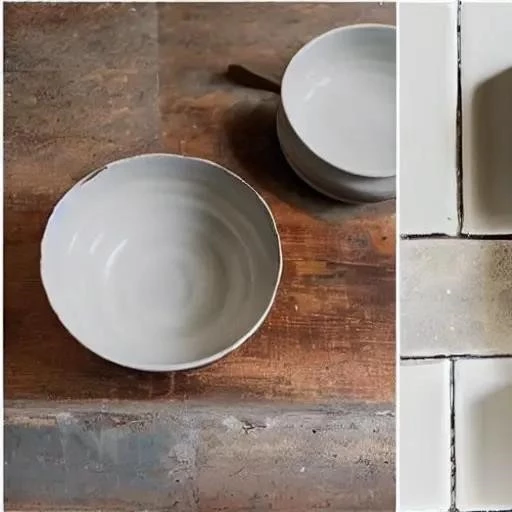For many homeowners, the kitchen stands as the vibrant heart of the home, a dynamic space where culinary creativity flourishes and cherished memories are forged. Yet, an aging, porcelain steel twin-bowl sink, often immovably tiled into the countertop, can feel like a dated anchor, holding back your vision of a modern, efficient, and aesthetically pleasing culinary sanctuary. The prospect of replacing such a fixture, particularly one meticulously integrated with quarter-round tiles, frequently evokes a daunting sense of trepidation, leading many to postpone what could be a remarkably transformative upgrade.
Imagine, if you will, the sleek gleam of a new stainless steel basin or the robust elegance of a contemporary cast iron drop-in, perfectly complementing a refreshed countertop. This isn’t merely a functional update; it’s an opportunity to redefine your kitchen’s character, enhancing both its utility and its allure. While the task of removing a tiled kitchen sink might appear formidable at first glance, requiring a delicate balance of precision and power, modern tools and refined techniques have dramatically simplified the process, empowering dedicated DIY enthusiasts and seasoned professionals alike to achieve spectacular results without compromising the surrounding aesthetics. This comprehensive guide will equip you with the deep knowledge and expert insights necessary to navigate this exciting renovation with confidence and skill.
| Category | Item | Description/Purpose | Safety Precaution |
|---|---|---|---|
| Essential Tools | Oscillating Saw | Ideal for precisely cutting grout lines around the sink’s perimeter, minimizing collateral damage to adjacent tiles. | Wear safety glasses and gloves. Ensure a firm grip; be mindful of blade kickback. |
| Essential Tools | Angle Grinder with Diamond Blade | Highly effective for carefully cutting through tile or adhesive directly adjacent to the sink, facilitating its liberation. | Absolutely essential to wear safety glasses, hearing protection, and a dust mask. Maintain a slow, controlled pace to avoid chipping. |
| Essential Tools | Utility Knife / Caulk Scraper | Crucial for meticulously cutting through old sealant, silicone, or caulk, which often firmly binds the sink to the countertop. | Use a sharp blade; always cut away from your body. Replace blades frequently for optimal performance. |
| Essential Tools | Chisel & Hammer | Utilized for gently prying up loose tile pieces or breaking through stubborn grout after initial cuts. | Protect your hands with gloves. Strike with controlled force, aiming to chip away rather than shatter large sections. |
| Essential Tools | Pry Bar / Putty Knife | Valuable for applying leverage to lift the sink once sealant and grout have been sufficiently compromised, or to gently separate tiles. | Use caution to avoid damaging underlying cabinetry or countertop surfaces. Support the sink from below if possible. |
| Essential Tools | Adjustable Wrench / Pliers | Necessary for disconnecting plumbing components (supply lines, drain traps, garbage disposal) beneath the sink; | Turn off the main water supply to the kitchen before starting. Have a bucket ready for residual water. |
| Essential Tools | Safety Glasses, Gloves, Dust Mask | Non-negotiable personal protective equipment for safeguarding against debris, sharp edges, and airborne particles. | Always wear these throughout the entire removal process. |
| Helpful Tip | Assistant | An extra pair of hands can be incredibly beneficial for supporting the sink during removal or applying lifting force. | Communicate clearly and coordinate movements to prevent accidents. |
The journey to a revitalized kitchen begins with a strategic approach, meticulously planned to mitigate potential damage and ensure a smooth transition. Historically, removing a tiled-in sink was often synonymous with a complete countertop overhaul, as the very structure of the installation seemed to defy easy extraction. Many older undermount sinks, for instance, were often mounted directly to a plywood substrate, over which tiles were then painstakingly laid. This construction method meant that removing the sink without significantly damaging the surrounding tile appeared to be an almost insurmountable challenge.
However, advancements in tools and a deeper understanding of materials have transformed this once-dreaded task into a manageable project. Industry experts now advocate a systematic process, starting with the careful disconnection of all plumbing, including water supply lines, drainpipes, and any garbage disposal units. This crucial preliminary step not only clears the workspace but also prevents accidental water damage, setting the stage for the more intricate work to come. Subsequently, the focus shifts to the sealant—that tenacious barrier holding the sink firmly in place. Employing a sharp utility knife, meticulously run around the entire perimeter of the sink, will effectively sever the bond created by years of caulk or silicone, allowing for initial movement.
The true artistry, however, lies in addressing the tiled perimeter. For sinks seamlessly integrated with quarter-round tiles, the challenge is distinct. Seasoned professionals often recommend an oscillating saw for its precision, allowing you to carefully cut through the grout lines that encase the sink. This minimizes vibration and reduces the risk of fracturing adjacent tiles. For more stubborn integrations or where the tile itself overlaps the sink flange, a 4-inch angle grinder fitted with a diamond blade becomes an incredibly effective, albeit demanding, tool. By integrating insights from experienced contractors, one learns to perform these cuts slowly and deliberately, preventing chips and preserving the integrity of the surrounding countertop, an outcome once considered nearly impossible.
Once the grout and sealant are compromised, the physical removal of the sink requires a combination of patience and strategic leverage. Applying gentle, upward force to the sink, perhaps with the aid of an assistant lifting from below or through the drain holes, while simultaneously working a putty knife or pry bar into the newly created gaps, will gradually loosen its grip. This methodical approach prevents sudden drops or uncontrolled movements that could otherwise tear out large sections of tile or damage cabinetry. The goal is a controlled release, ensuring that the existing structure remains largely intact, simplifying the subsequent installation of your chosen replacement.
Replacing a tiled-in sink is not merely about demolition; it’s about embracing the future of your kitchen. The availability of high-quality stainless steel drop-in sinks, like the popular Kohler k-5817, offers remarkable versatility, often being larger than the original opening and thus capable of concealing any minor imperfections left by the removal process. This opens up a world of design possibilities, from deep, single-basin designs that accommodate large pots with ease to contemporary double-bowl configurations that streamline meal preparation and cleanup. The forward-looking homeowner understands that this upgrade is an investment, significantly boosting both the functionality and market appeal of their property.






